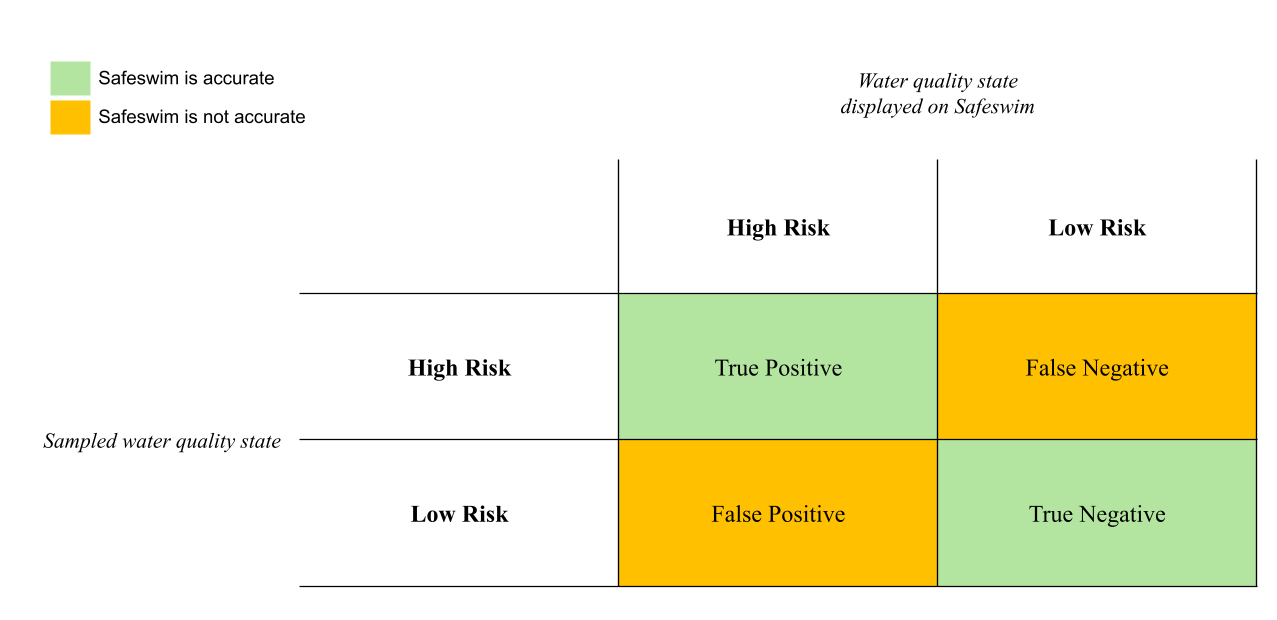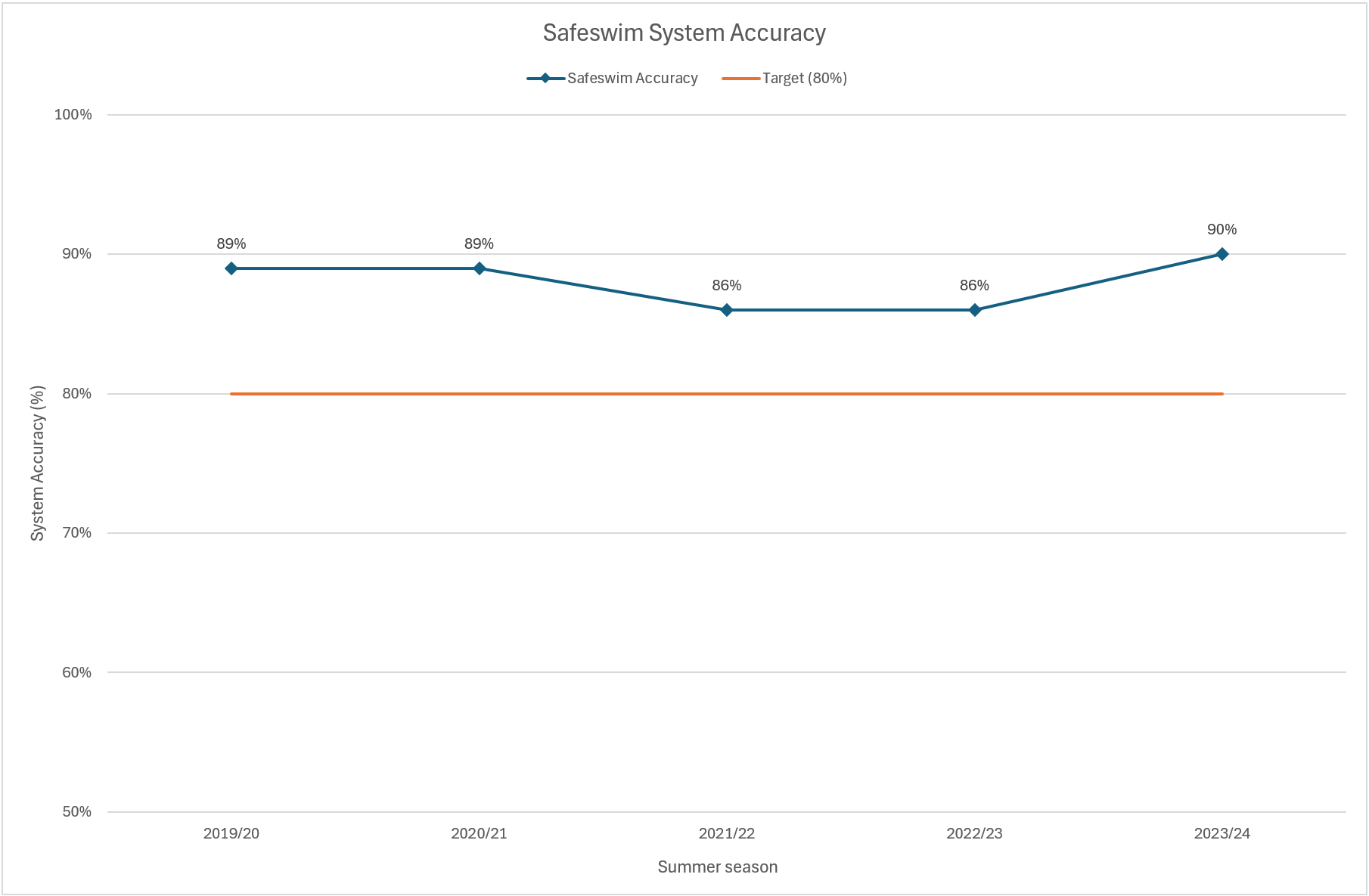The accuracy of information provided by Safeswim to the public about water quality is crucial for realising the benefits of preventing water-borne illnesses and for maintaining public trust and confidence in the system.
The green, red, and black water quality pins shown on the Safeswim website reflect a combination of modelled, real-time water quality predictions (dynamic green and red pins), temporary precautionary warnings (red and black pins triggered by automated overflow alerts or manual alerts), and permanent precautionary warnings or all-clears (permanent red and green pins).
The system accuracy measures how well the information on Safeswim matches the results from water quality samples.
Sampled water quality is classified as either high risk or low risk for swimming depending on whether the level of faecal indicator bacteria (FIB) in the sample is above or below a set threshold. The sampled water quality is compared to the water quality state that was shown on Safeswim for the same location at the time the sample was taken. The water quality state shown on Safeswim is considered accurate if it is in the same classification – high risk or low risk – as the sampled water quality. This is illustrated in the figure below.
What “accuracy” means in Safeswim’s context
The accuracy of the Safeswim system is assessed each year, overseen by Audit NZ. A subset of all samples collected by Safeswim is chosen at random and the sample results are compared against the recorded model predictions, automatic overflows and manual alerts, and the water quality state that was displayed on the Safeswim website at the time the sample was taken.
Based on this analysis, Safeswim has exceeded its target accuracy of 80% over each of the last five summers:
Safeswim has been 86% - 90% accurate over the last five summers